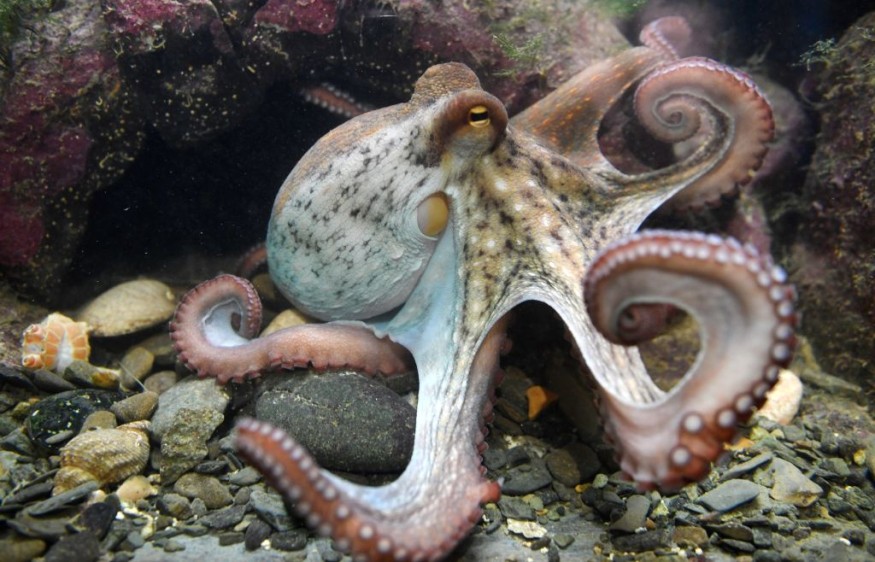Wild octopuses were caught on video by scientists for the first time fighting by hurling shells and sand at each other, according to a new study led by an international team of researchers.
The study highlights the bizarre behavior only few animals are capable; intentionally throwing things whether indirectly or directly at other living organisms. Previously, studies have found that some mammals can also throw materials.
Wild Octopus Fight Video

A YouTube video uploaded by the channel Science X: Phys.org, Medical Xpress, Tech Xplore on Thursday, November 10, showed the octopuses throwing silt and shells both around themselves at each other.
The 1 minute, 35 seconds clip shows both marine creatures are at a seafloor, nuking with one another interchangeably with one of the octopuses being dominant.
Scientific data and findings about the video was published in the open-access journal PLOS ONE on Wednesday, November 9, where researchers from Australia, Canada, and the United States discovered the spectacular behavior of "debris throwing" by wild octopuses. Specifically, the research team focused on the gloomy octopus (Octopus tetricus) species.
The team found that the gloomy octopuses in the video and other members of the said octopus species frequently propel algae, silt, and shells through the water by releasing the mentioned materials from their tentacles. Similar to ball-throwing sports game, the new study highlights the powerful arms of the sea animals that create a forceful jet from the siphon held under the arm web.
Study Methodology and Data
These "throws" occurred in several instances at a site in Jervis Bay, Australia, including interactions with other octopuses. Material hurled during interactive contexts frequently hits other octopuses. There are some throws that appear to target other individuals, based on several kinds of available evidence.
In particular, the scientists found debris throwing in interactive contexts were "more vigorous" than other and most often used silt, rather than algae or shells. In addition, "high vigor throws" were more mostly accompanied by uniform or dark body patterns compared to other throws.
The PLOS ONE research also determined some throws were directly projected differently from beneath the arms and such hurls were more likely to hit other octopuses. These findings shed light on the rare form of nonhuman projectile use, as previous studies have seen only in social mammals.
Projectile Throwing Behavior
In recent decades, there is a growing body of evidence that suggests octopus interactions in some species are more complex than people have thought.
Humans normally teach their toddlers that throwing things at somebody is not the best way to communicate. However, the projectile-throwing behavior is different when it comes for other animals that live in close-knit communities such as chimpanzees, capuchin monkeys, and dolphins.
This is confirmed by the study that hurling objects at members of the same species or population for animals can serve as a significant social cue, as cited by Live Science.
© 2026 NatureWorldNews.com All rights reserved. Do not reproduce without permission.





